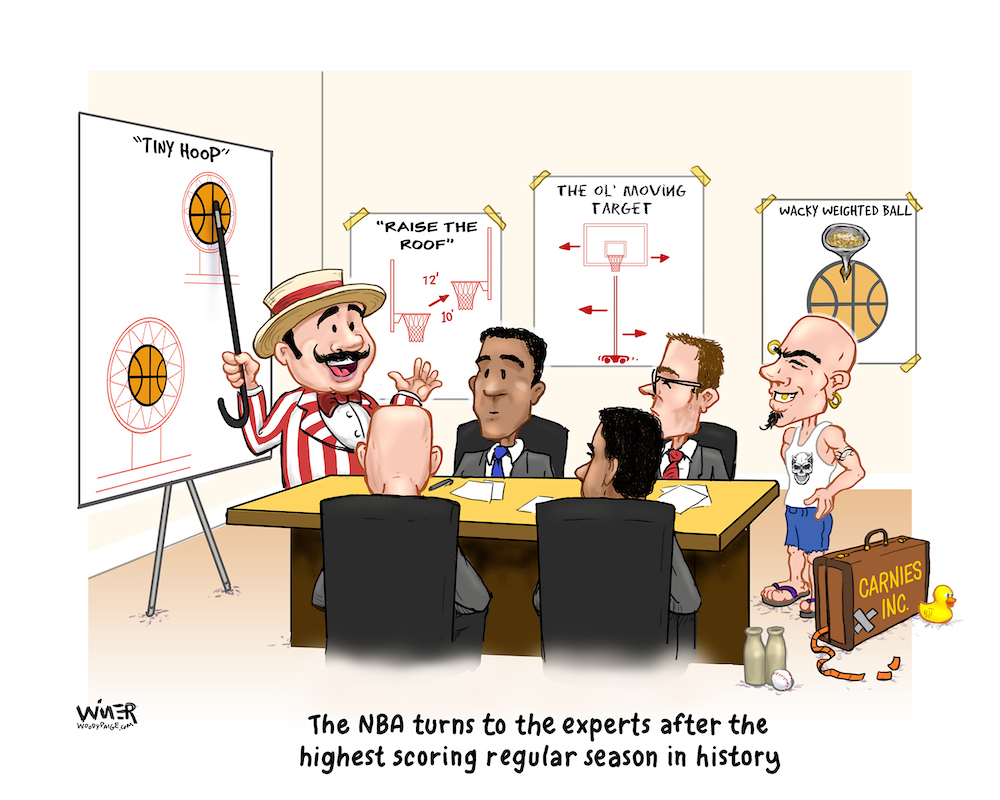Kill the RoboUmp!
Ernest L. Thayer’s 1888 poem “Casey At The Bat’’ may have to be updated.
In that illustrious baseball ode, Casey, the Mudville star, strolled to the plate to win the game. But he took the first pitch.
“And Casey stood a-watching it in haughty grandeur there.
Close by the sturdy batsman the ball unheeded sped—
“That ain’t my style,” said Casey. “Strike one!” the umpire said.
From the benches, black with people, there went up a muffled roar,
Like the beating of the storm-waves on a stern and distant shore;
“Kill him! Kill the umpire!” shouted someone on the stand;
And it’s likely they’d have killed him had not Casey raised his hand.”
The expression “Kill the umpire’’ became rather popular over the decades, even if it was meant, somewhat, facetiously and sarcastically as a response to what fans believed were bad calls. In today’s world, the utterance is totally unacceptable.
Umpires are people, too.
Yet, if the current Major League Baseball experiment is a success, people would have to start shouting and screaming at a small black box.
In conjunction with the baseball authorities, the eight-team independent Atlantic League agreed, in July, to use “robot umpires’’ to judge balls and strikes.
In reality, there still is a home plate umpire who announces the “call’’ and oversees the game, but the “TrackMan’’ system – an electronic strike zone — makes the decisions on location of pitches.
After a couple of weeks, the league and MLB decided to continue the trial test until the end of the season.
The Atlantic League also has become the proving ground, or diamond, for other novel concepts – including a steal of first base. A batter actually can run to first on any pitch but, especially, on a wild pitch or a pass ball. Think wild pitch third strike that goes to the backstop when the hitter turns into a runner. Now, on a 2-1 pitch that bounces in the dirt and gets pass the catcher, the hitter can take off and try to make it safely to first. Days after that rule was instituted, an Atlantic League player became the first to steal first.
But that concept can’t equal the possibility of RoboUmp.
To simplify, laser beams, Bluetooth technology, a computerized method of determining the batter’s definitive height and unique strike zone, a black box behind and above the umpire and the umpires wearing earpieces would combine to make a call.
Most viewers of Major League Baseball games are familiar with the “strike zones’’ plastered on the TV screen. This technique sort of translates and is relayed from RoboUmp To Real Live Umpire. The umpire will hear “strike’’ or “ball’’ from the TrackMan and make his usual announcement. If there is an issue, such as an unrecorded pitch bouncing to the plate, or a technical issue (batteries have gone dead during the tryout), the human arbiter can take over.
The system does not figure in checked swings, and the umpire still will make that judgement.
The plan is to help the umpire make the correct call and end arguments with hitters and managers.
One Atlantic League umpire said RoboUmp (my preferred name for it), which has experienced bugs and busts, has a place in baseball as a supplement, not a replacement. Several players and managers in the National and American League are curious to see the results.
Perhaps a RoboUmp will be tried out during a spring training game in a season or two.
Replays have become commonplace in baseball. RoboUmp could be the future.
Fans in Mudville, Chicago, New York and Los Angeles would have to blame an inanimate object, not the man in the mask.
And Casey could still strike out, anyway.
















